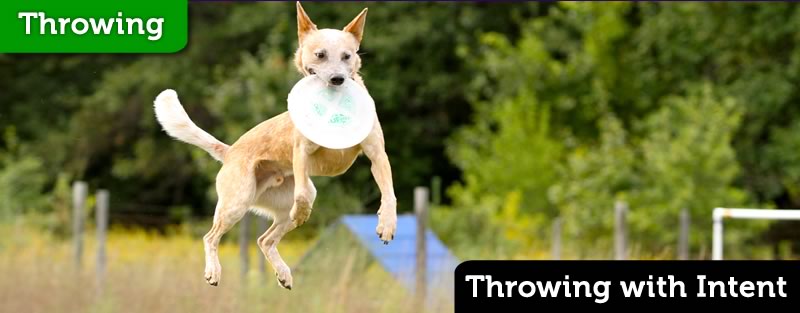
Paying the Release
Paying the Release Release has many meanings in disc. Throws and throw variations can be referred to as releases. Sometimes you talk about the dog releasing something, the toy, or the environment, as in to stop... More as we have been during this class is often a contentious issue for dog trainers.
Release has many meanings in disc. Throws and throw variations can be referred to as releases. Sometimes you talk about the dog releasing something, the toy, or the environment, as in to stop... More as we have been during this class is often a contentious issue for dog trainers.
As far as we’re concerned here at Pawsitive Vybe, “Duration is defined by the Release.” Duration has both a beginning and an end, that’s what the word means. If you don’t have control over the Release, you don’t have duration, it’s as simple as that.
I think the issue of whether or not to pay comes up based upon what the handler perceive the duration behavior to be. Is it a chore, duty or obligation? Or is it an fun, play, and opportunity?
Obligation or Opportunity?
If it is an obligation or duty, the handler is reluctant to reinforce the release because they don’t want too much value placed upon the release, as it is already self reinforcing and adding cookies could make the dog not want to stay. The allure of freedom is already too much of a distraction.
If Staying is fun and an opportunity to earn reinforcement, then the release can actually be a bit demotivating. The dog gets released and the reinforcement ends. They have actually lost the opportunity to work. So what does the dog who believes the duration behavior is an opportunity do after the release? They run right back over and offer the duration behavior again.
When your dog believes that duration behaviors are an opportunity, they don’t like to get up. If they don’t Release on cue, they do not understand duration. Paying the Release is important to help deliver the duration concept to your dog.
It’s a different mindset as a trainer and requires reframing the idea of Duration from Obligation to Opportunity. Once we have that viewpoint, that duration behaviors are an opportunity, paying the Release seems natural.
It’s a Cued Behavior
When the Release is cued and paid, it becomes a trick in and of itself. Do it on cue and get a cookie. Do it without the cue and get nothing. You can’t be Released if you’re not doing the duration behavior. Probably best to do it.
Rewarding with Interaction
Paying the Release forces interaction with the handler. The dog will learn to look to the handler for reinforcement after a release. You want your dog to want to interact with you after the Release, not the environment. You can pay the dog with a tossed cookie if you want them to go somewhere else or you can reinforce on us with a cookie. Remember that “a cookie” is any resource the dog finds valuable and that regardless of where we reward the dog, the dog is being conditioned to interact with the handler after the Release through marking and reinforcement.
Leveraging the Release
The thing is… the Release is going to happen regardless of whether or not you pay it. Might as well reinforce it and leverage it towards strengthening your duration behavior.
Go Variable
Once the dogs understand and believe in the Release we can start to variably reinforce it. We can also Reward with Action if we’d like…









Ahhhhh got it! Makes so much sense! “reframing the idea of Duration from Obligation to Opportunity.” Of course! Yet another ahaaaaa moment! Thanks Ron!